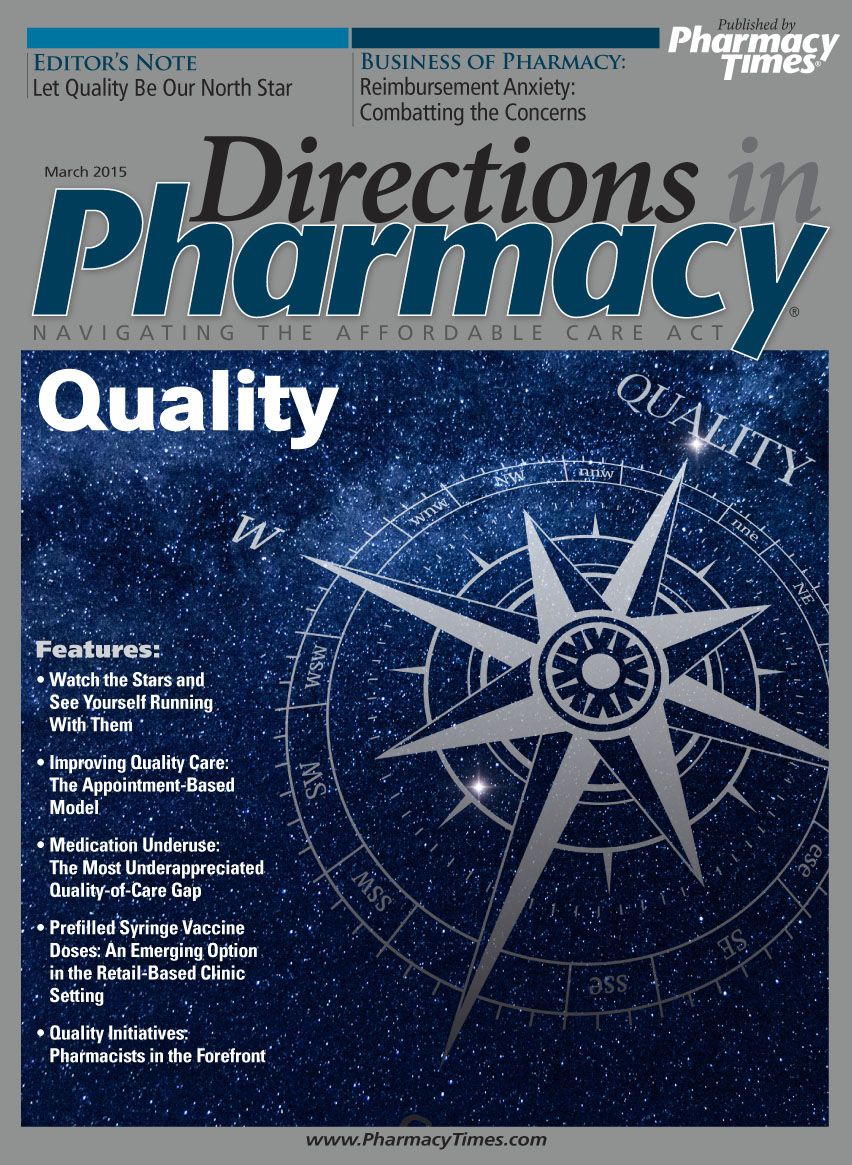Publication
Article
Pharmacy Practice in Focus: Oncology
The Two Fundamental Changes to Pharmacy Work Flow We've Been Awaiting
Medication synchronization and appointment-based models are growing rapidly in all corners of community pharmacy practice.

Medication synchronization and appointment-based models are growing rapidly in all corners of community pharmacy practice. Heretofore, these models of work flow have been reserved to skilled nursing facilities (SNFs) and assisted living facilities (ALFs), for which deliveries of medications in organized-unit dosing on a regular schedule was a necessity for patients who could not self-administer medications. As it turns out, even patients and consumers who aren’t in an SNF or an ALF can struggle to successfully self-administer medications.
Ten years from now, it’s likely that we will all look upon this transition of millions of patients to a medical synchronization program and wonder, “Why didn’t this happen sooner?” I honestly cannot offer a reason for not picking up on this sooner myself since it seems like such a no-brainer, particularly now in light of star ratings and other quality and performance programs. The need for increasing fill rates, care gap reductions, accountable care contracts, and value-based purchasing is becoming the norm, prompting payers and purchasers of health care to strongly consider the benefits to medical cost offsets of investing in medication optimization activities. Although the positive clinical and economic outcomes that are beginning to emerge are promising, the work flow changes to the pharmacy that are resulting from this movement are the most exciting aspect of it.
Two Fundamentally Different Processes Within Pharmacy Work Flow
(1) Review of a patient’s profile brings great benefit to the pharmacist’s global understanding of a patient’s regimen, as well as the opportunity to evaluate therapeutic considerations, discrepancies, and adherence issues in context and in relation to the other medications in their regimen.
Pharmacy management systems were initially designed for efficient billing and distribution of drug products. Thus, their queuing is typically designed at the prescription or order level. For patients with complex regimens, there are often multiple orders at multiple points during the month, with multiple opportunities for drug misadventures that result from “not seeing the forest for the trees.” In the process of synchronizing all current medications, the pharmacist (for the first time) is required to review and consider in more detail the patient’s full regimen.
(2) Scheduled patient appointments allow the community pharmacy to load-balance the complex patients. If there is a problem, no efficiently staffed pharmacy wants to stop the one-off filling process on a Monday morning to engage in a high-level review of a patient’s medications, then sit down to review any changes with the patient and communicate with their multiple prescribers. Those tasks are best reserved for afternoons in the middle of the week or even on weekends. Being able to pick which patients get which services at which times during the week is a profoundly different way of operating a pharmacy from a systems’ engineering perspective.
These 2 fundamental changes to pharmacy work flow open up the pharmacy to a host of potential clinical and care coordination services for patients with medically complex cases that would otherwise be difficult to implement without the ability to schedule an appointment for the patient. Now, one of the 2 major barriers in the community pharmacy for the successful and prosperous delivery of cognitive services is removed. Only payment for those services remains as a barrier, and that barrier may be removed as soon as value-based reimbursement begins to hit all types of providers squarely in the face.
Troy Trygstad, PharmD, PhD, MBA, is the director of the Network Pharmacist Program and Pharmacy Projects for Community Care of North Carolina (CCNC), a parent organization of 14 regional care management networks. These networks bring together medical practices, county health departments, hospital systems, and mental health providers to integrate care delivery for Medicaid, Medicare, private plans, employers, and the uninsured. CCNC and its networks are responsible for developing and evaluating accountable care systems in North Carolina.Under his direction at CCNC, the Network Pharmacist Program has grown to include pharmacists who are involved in a number of diverse activities ranging from patient-level medication reconciliation to practice-level e-prescribing facilitation to network-level management of pharmacy benefits. Dr. Trygstad also plays an integral role in health information technology adoption and proliferation with CCNC practices and across the state, leading e-prescribing adoption efforts as well as the development and deployment of a statewide medication management platform.He has been involved in novel adherence implementations as well as the development of adherence technologies that use administrative claims data to predict, intervene, and triage adherence interventions and coaching opportunities. Dr. Trygstad received his PharmD and MBA degrees from Drake University and a PhD in pharmaceutical outcomes and policy from the University of North Carolina.He is co-editor-in-chief of the Pharmacy Times series Directions in Pharmacy®.







